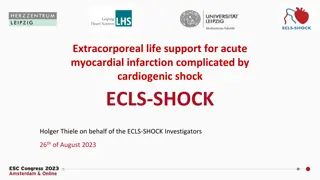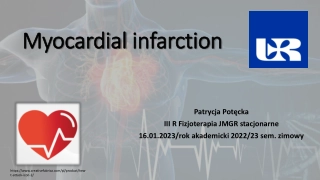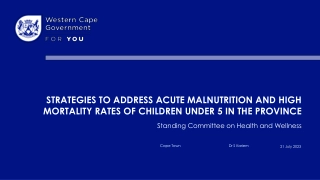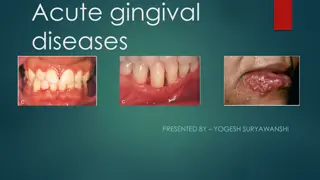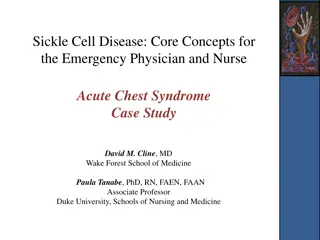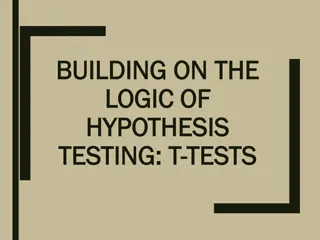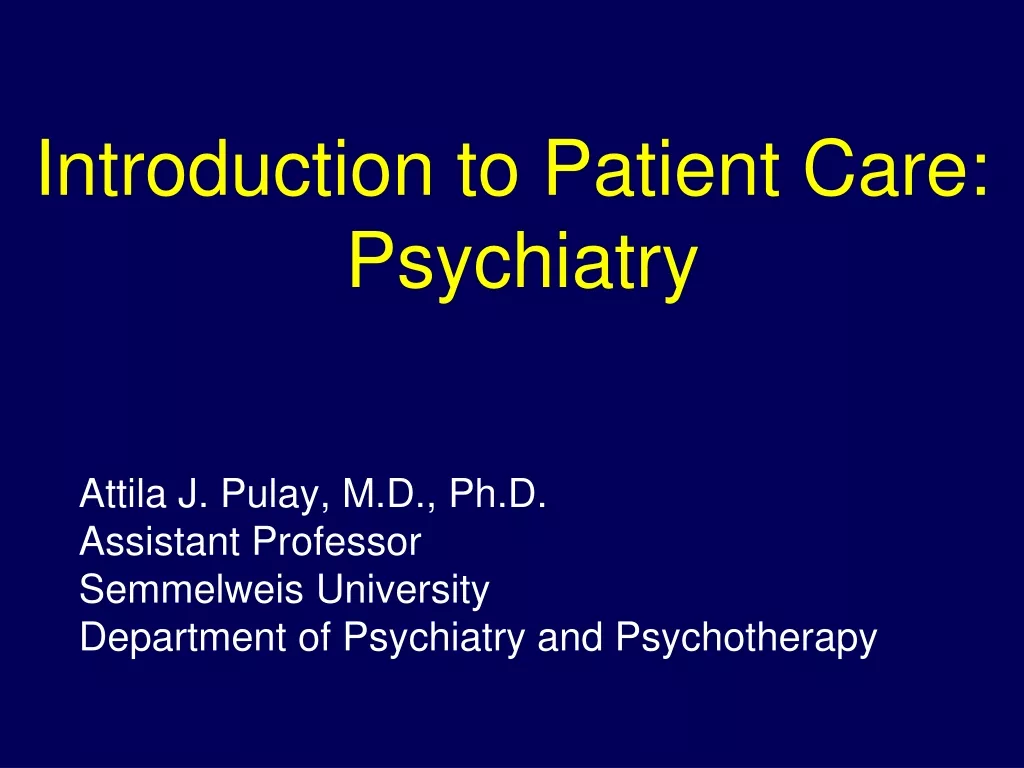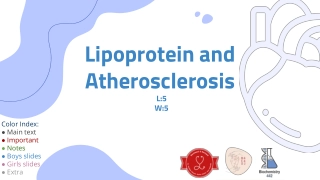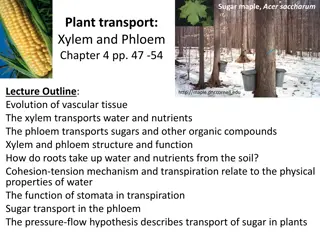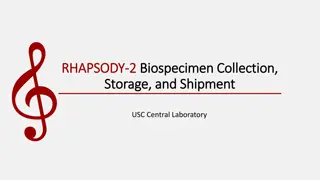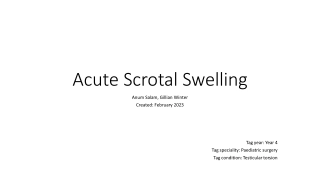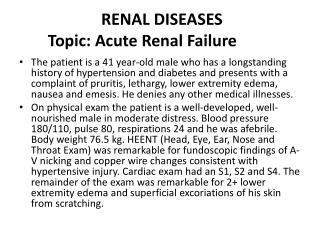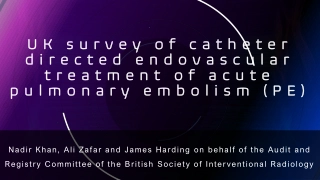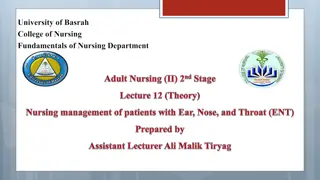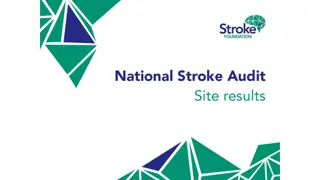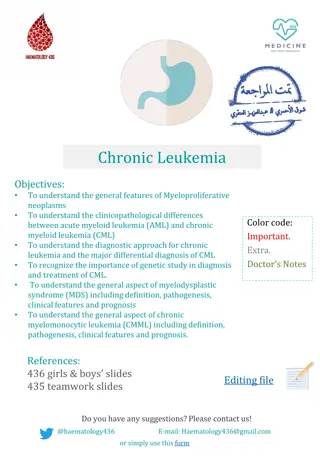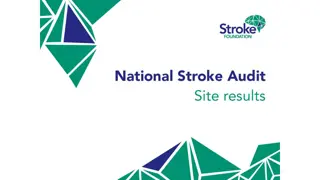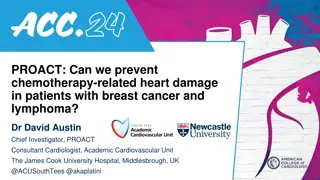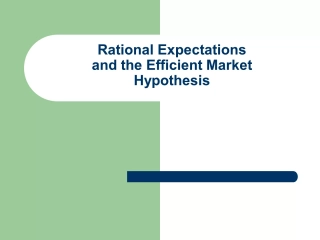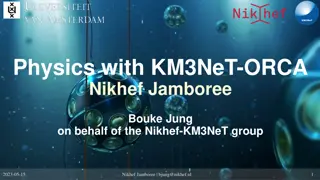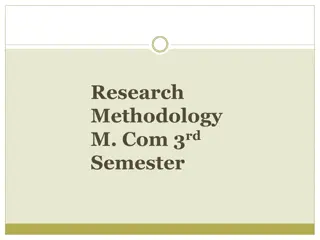Evolution in HDL Hypothesis: CSL-112 Infusions in Acute Myocardial Infarction
This study explores the use of CSL-112 infusions in patients with acute myocardial infarction to enhance high-density lipoprotein (HDL) function. By focusing on improving HDL-C function through ApoA-1 infusions, the research aims to enhance outcomes associated with cardiovascular events. The efficacy of raising HDL numbers has been uncertain in reducing events, prompting this innovative approach to address HDL dysfunction and potential toxicity. The findings suggest potential benefits in improving clinical outcomes.
Download Presentation
Please find below an Image/Link to download the presentation.
The content on the website is provided AS IS for your information and personal use only. It may not be sold, licensed, or shared on other websites without obtaining consent from the author. Download presentation by click this link. If you encounter any issues during the download, it is possible that the publisher has removed the file from their server.
- HDL Hypothesis
- CSL-112 Infusions
- Cardiovascular Outcomes
- Acute Myocardial Infarction
- ApoA-1 Function
Presentation Transcript
CSL 112 (Apolipoprotein A-I) Infusions and Cardiovascular Outcomes in Patients With Acute Myocardial Infarction (ApoA-I Event ReducinG in Ischemic Syndromes II (AEGIS-II) Trial) C. Michael Gibson, M.S., M.D.; Danielle Duffy, M.D.; Gerald Chi, M.D.; Serge Korjian, M.D.; M. Cecilia Bahit, M.D.; John H. Alexander, M.D., M.H.S.; A. Michael Lincoff, M.D.; Mark Heise, Ph.D.; Pierluigi Tricoci, M.D., Ph.D., M.H.S.; Jose C. Nicolau, M.D., PhD; Renato Lopes, M.D.; Bela Merkely, M.D.; Basil S. Lewis, M.D.; Jan H. Cornel, M.D.; Jaroslaw Trebacz, M.D.; Alexander Parkhomenko, M.D.; Peter Libby, M.D.; Frank Sacks, M.D.; Thomas J. Povsic, M.D. Ph.D.; Lawrence I. Deckelbaum, M.D.; Jenny Mears; Marc Bonaca, M.D.; Shaun G. Goodman, M.D., M.S.c.; Deepak L. Bhatt, M.D., M.P.H.; Michal Tendera, M.D.; P. Gabriel Steg, M.D.; Paul Ridker, M.D.; Philip Aylward, M.D.; John Kastelein, M.D.; Christophe Bode, M.D.; Kenneth W. Mahaffey, M.D; Stephen J. Nicholls, M.B.B.S., Ph.D..; Stuart Pocock, Ph.D.; Roxana Mehran, M.D.; Robert Harrington, M.D. On Behalf of the AEGIS-II Committees and Investigators ACC 2024 Slide by C. Michael Gibson, M.S., M.D.
Disclosures Present Research/Grant Funding Consultant Spouse: Employee of Boston Clinical Research Institute, has equity Angel/Avertix Medical AstraZeneca Bayer Beren Therapeutics Boehringer Ingelheim Boston Clinical Research Institute Bristol-Myers Squibb Cardiovascular Research Foundation CeleCor Therapeutics Esperion EXCITE International ($0 Received) Fortress Biotech Janssen/ J&J MashUp MD MD Magazine Microport Novartis NovoNordisk Pfizer Angel/Avertix Medical AstraZeneca Bayer/Janssen/ J&J Beren Therapeutics Bioclinica Boehringer Ingelheim Boston Clinical Research Institute Boston Scientific Bristol-Myers Squibb Cardiovascular Research Foundation CeleCor Therapeutics CSL Behring DCRI Esperion EXCITE International ($0 Received) MD Magazine Merck Microport MjHealth Novartis NovoNordisk PERT Consortium Pfizer PhaseBio PHRI PLxPharma Revance Therapeutics Samsung SFJ SCAI Solstic Health/New Amsterdam Pharma Somahlution/Marizyme Vectura Woman As One Janssen/Johnson & Johnson CSL Behring SCAD Alliance Baim Institute PLxPharma Patents and Stocks: None Smart Medics Solstic Health/New Amsterdam Pharma Somahlution/Marizyme Vectura Equity: nference, Inc. WedMD Dyad Medical Woman As One Absolutys Fortress Biotech Fortress Biotech Gilead Sciences, Inc. Inari MashUp MD FlowTherapy ACC 2024 Slide by C. Michael Gibson, M.S., M.D.
Evolution in the HDL Hypothesis The main role of HDL-C is to carry cholesterol from cells to the liver, where hepatocytes degrade cholesterol for excretion via bile Present Past Improving HDL Function Improving HDL-C Number Higher HDL-C associated with lower events, but therapies that raise HDL numbers numbers have not reduced events have not reduced events raise HDL- -C C ? Dysfunctional HDL Off Target Toxicity We hypothesized that improving HDL function by infusing human ApoA-1, the primary functional component of HDL, would improve outcomes Improves Clinical Outcomes ACC 2024 Slide by C. Michael Gibson, M.S., M.D. HDL, high-density lipoprotein
Measuring HDL Function Instead of HDL-C Number: Measuring Cholesterol Efflux Capacity From Macrophages Macrophages with radioactive cholesterol are added to the patient's blood and the amount of radioactive cholesterol taken up by the HDL is measured HDL HDL From Patients Blood Macrophage With Radioactive Cholesterol ACC 2024 Slide by C. Michael Gibson, M.S., M.D.
Improved Cholesterol Efflux Capacity (CEC) Is Associated With Improved 6 Year Survival Following MI CEC and Mortality in AMI (1-Month Follow-Up) 100 Cumulative survival (%) HR (95% CI), adjusted* 0.32 (0.13 0.78) 0.76 (0.39 1.47) 0.70 (0.38 1.28) 100 Cumulative survival (%) CEC and Mortality in AMI Q4 Q4 Q3 Q3 Q2 Q2 HR (95% CI), adjusted* 90 90 Q4 Q4 Q3 Q3 0.54 (0.32 0.89) 0.76 (0.48 1.21) Q1 Q1 Reference 80 Most of the difference emerges in the first 30 days 80 Q2 Q2 Q1 Q1 0.84 (0.55 1.27) Reference 70 0 1 2 3 4 5 6 Follow-up (years) 70 0 5 10 15 20 25 30 Follow-up (days) Q1, Q2, Q3 and Q4 relate to the quartiles of CEC measured, in both figures. . Age and sex, CV risk factors and prognostic factors of MI. AMI, acute myocardial infarction; CEC, cholesterol efflux capacity; CI, confidence interval; CV, cardiovascular; HR, hazard ratio; MI, myocardial infarction; Q, quartile Figures adapted from Guerin, M. et al. J Am Coll Cardiol. 2018;72:3259 69. ACC 2024 Slide by C. Michael Gibson, M.S., M.D.
CSL112 Is Human ApoA-1 Purified From Human Plasma, Reconstituted With Phosphatidylcholine, Stabilized With Sucrose; Suitable For IV Infusion & Produces a Significant, Dose-Dependent Improvement in Cholesterol Efflux in Post-MI Patients Fold elevation at peak after 1stinfusion 5 Placebo 2 g CSL112 4.3 compared to baseline 4 6 g CSL112 3.67 3 2.45 2 1.87 1 0.94 0.82 0 Total cholesterol efflux (%/4h) ABCA1-dependent cholesterol efflux (%/4h) In Phase II trials, CSL112 produced a dramatic, dose-dependent increase in apoA-I levels and cholesterol efflux1 ACC 2024 Slide by C. Michael Gibson, M.S., M.D. Gibson CM, et al. Circulation 2016;134:1918 30.
Histology Data from Human Femoral Arteries: ApoA-I Infusion Reduces Macrophage & Fat Content in Plaque A single infusion of ApoA-I (CSL111) reduced femoral plaque by >50% in 5 7 days1 Oil Red O lesion area 80000 Placebo rHDL 60000 ( m2) 40000 * 20000 0 Placebo rHDL Macrophage size in lesion Placebo rHDL 1500 1250 1000 ( m2) 750 500 250 * 0 ACC 2024 Slide by C. Michael Gibson, M.S., M.D. Shaw et al. Circ Res. 2008;103:1084-91
Hypothesis of the AEGIS 2 Trial Prior Observations: CSL 112 ApoA-1 infusions improved cholesterol efflux in the setting of MI and reduced fat and macrophage content in atherosclerotic plaque Improved cholesterol efflux is associated with improved CV outcomes in the setting of MI Hypothesis: CSL 112 infusion will improve CV outcomes in the setting of MI ACC 2024 ACC 2024 Slide by C. Michael Gibson, M.S., M.D.
ApoA-1 Event ReducinG in Ischemic Syndromes II A phase 3, multicenter, double-blind, randomized, placebo-controlled, event-driven, parallel-group study Treatment period (4 weekly infusions) Within 5 days of MI after angio Follow-up period (1 year) 18,219 AMI patients 6 g CSL112 (n=9,112) Stratification by: STEMI/NSTEMI PCI/medical management Region Infusio n: Visit: Placebo (n=9,107) 1 2 3 4 Key secondary EPs 180 & 365 days 2 3 4 5 6 7 10 8 9 11 1 1 8 (- 15 (- 22 (- 2/+1) 29 ( 2 ) 60 ( 10) 270 ( 10) Within 5 days of arriving for evaluation and treatment of MI 90 ( 10) 180 C ( 10) 365 (+14) Study day: 2/+1) 2/+1) Multivessel Disease AND either Drug Treated Diabetes OR 2 of the following: 65 years Prior MI PAD All infusions given within 30 days of the first infusion Randomization Primary endpoint at 90 days ITT analysis. Two-sided type I error of 0.05 with 90% power on an assumed hazard ratio of 0.80 for the primary endpoint with an observed event rate of 5% at 75% of the way through the trial led to a required sample size of 18,200, targeting 905 primary events Cumulative event rates using the Kaplan-Meier method were calculated for the primary efficacy endpoint and other time to event endpoints. A covariate-adjusted Cox regression model including fixed effects for treatment, region, index MI type, index MI management, age, diabetes, peripheral arterial disease, prior MI, and an interaction term for index MI type and index MI management was fitted to estimate the hazard ratio and two-sided 95% confidence interval ACC 2024 Slide by C. Michael Gibson, M.S., M.D. AMI, acute myocardial infarction; MI, myocardial infarction; NSTEMI, non-ST-elevation myocardial infarction; PCI, percutaneous coronary intervention; STEMI, ST-elevation myocardial infarction. Gibson CM, et al. Am Heart J. 2021;231:121 7.
Trial Leadership Executive Committee: C. Michael Gibson, MS, MD (Chairman); Robert A. Harrington, MD, (Co-Chairman) John Alexander, MD, MHS; Philip A. Aylward, BM, BCh, PhD; Deepak Bhatt, MD, MPH; Christoph Bode, MD; Shaun Goodman, MD, MS c; John Kastelein, MD, PhD; Kenneth Mahaffey, MD; A. Michael Lincoff, MD; Roxana Mehran, MD; Stephen J. Nicholls, MBBS, PhD; Stuart Pocock, PhD; Paul Ridker, MD; P. Gabriel Steg, MD; Michal Tendera, MD. Sponsor Representatives: Danielle Duffy, MD; Pierluigi Tricoci, MD, PhD. Independent Data Monitoring Committee: Douglas Weaver, MD (Chair); Michel Bertrand, MD; David Faxon, MD; Bruce Molitoris, MD; David Waters, MD; Jan Tijssen, PhD. Clinical Events (Adjudication) Committee: Venu Menon, MD (CEC Director); Vidyasagar Kalahasti, MD (CEC Associator Director); Aldo Schenone, MD; Dane Meredith, MD; Jonathan Hansen, MD; Nyal Borges, MD; Cameron Lambert, MD; Bryan Wilner, MD; Amit Goyal, MD; Anirudh Kumar, MD; Kartik Telukuntla, MD; Divyang Patel, MD; Robert Montgomery, MD; Reza Reyaldeen, MD; Todd Brophy, MD; Travis Howard, MD; Balint Laczay, MD; Rohan Shah, MD; Ramya Vajapey, MD; Zachary Goff, MD; Nicholas Kamp, MD; Trent Wei, MD; David Katzianer, MD; Erich Kiehl, MD; Dane Meredith, MD; Jitendra Sharma, MD; Nirav Vora, MD; Siddharth Sehgal, MD; Ken Uchino, MD; Willis C. Maddrey, MD; James H. Lewis, MD; James Freston, MD, PhD. ACC 2024 Slide by C. Michael Gibson, M.S., M.D.
National Lead Investigators 18,226 participants at 886 sites in 49 countries were randomized between March 2018 and November 2022 (Argentina) Cecilia Bahit, MD; (Australia) Gemma Figtree, MB BS, DPHIL (OXON), FRACP, FCSANZ, FAHA; (Austria) Kurt Huber, MD, FESC, FACC, FAHA; (Belgium) Pascal Vranckx, MD; (Brazil) Renato Lopes, MD, MHS, PhD; (Brazil) Jose Carlos Nicolau, MD, PhD; (Bulgaria) Nina Gotcheva, MD, PhD; (Canada) Kevin Bainey, MD, MSc; (Chile) Juan Carlos Prieto, MD; (Colombia) Miguel Urina Triana, MD, MSc, PhD, FACC; (Czech Republic) Miroslav Solar, MD; (Denmark) Svend Eggert Jensen, MD, PhD, FESC; Morten B ttcher, MD PhD; (Estonia) Margus Viigimaa, MD, PhD, FESC; (Finland) Mika Laine, MD; (France) Gilles Montalescot, MD, PhD; (Georgia) Tamaz Shaburishvili; (Germany) Daniel Duerschmied, MD; (Greece) Dimistris Tousoulis, MD; (Hong Kong) Michael Lee, MD; (Hungary) Bela Merkely, MD, PhD; (Israel) Basil Lewis, MD; (Italy) Giuseppe Ambrosio, MD, PhD; (Japan) Satoshi Yasuda, MD; (Latvia) Andrejs Erglis, MD; (Lithuania) Rimvydas Slapikas, MD, PhD; (Malaysia) Alan Fong, MD; (Mexico) Jose Luis Leiva Pons, MD; ACC 2024 Slide by C. Michael Gibson, M.S., M.D.
Baseline Characteristics Type of index MI - no. (%) STEMI NSTEMI PCI performed for index MI no. (%) Medications at time of Randomization no. (%) Aspirin P2Y12 inhibitor or other anti-platelet agent HMG CoA reductase inhibitor (statin) High intensity statin therapy^^ Median lipid level (IQR) mg/dL** Total Cholesterol LDL Cholesterol HDL Cholesterol Triglycerides CSL 112 4606 (50.5) 4506 (49.5) 8037 (88.2) Placebo 4600 (50.5) 4507 (49.5) 7997 (87.8) 8489 (93.2) 8508 (93.4) 8429 (92.5) 6871 (75.4) 8473 (93.0) 8490 (93.2) 8424 (92.5) 6890 (75.7) 160 (133-192) 159 (133-190) 84 (61-112) 39 (33-46) 156 (117-212) 153 (117-208) 84 (62-111) 39 (33-47) ACC 2024 Slide by C. Michael Gibson, M.S., M.D.
Trial Compliance and Follow Up 90% of subjects completed all 4 infusions 99.5% of subjects completed 90 days of follow-up 99% completed 365 days of follow-up 1 patient lost to follow up in each group ACC 2024 Slide by C. Michael Gibson, M.S., M.D.
Primary Endpoint Time to First Occurrence of CV Death, MI or Stroke Key Secondary Endpoint 180 days 6.9% vs. 7.6% HR=0.91 (0.81-1.01) p=0.077 Key Secondary Endpoint 365 days 9.8% vs. 10.5% HR=0.93 (0.85-1.02) p=0.137 12 Placebo Primary Endpoint 90 days 4.9% vs. 5.2% HR=0.93 (0.81-1.05) p=0.24 10 8 CSL 112 6 4 2 0 0 270 45 315 90 225 180 365 135 8188 8155 7790 7761 CSL 112 Placebo 9112 9107 8714 8714 8581 8562 8470 8442 8364 8329 8264 8232 8121 8093 Cumulative event rates using the Kaplan-Meier method were calculated for the primary efficacy endpoint and other time to event endpoints. A covariate-adjusted Cox regression model including fixed effects for treatment, region, index MI type, index MI management, age, diabetes, peripheral arterial disease, prior MI, and an interaction term for index MI type and index MI management was fitted to estimate the hazard ratio and two-sided 95% confidence interval ACC 2024 ACC 2024 Slide by C. Michael Gibson, M.S., M.D.
Other Key Pre-Specified Secondary Endpoints Hazard Ratio or Rate Ratio CSL112 Placebo (95% CI) End Point Key Secondary Efficacy Endpoints Hospitalizations for coronary, cerebral, or peripheral ischemia per 90 days of follow-up no. hospitalizations, mean rate* Other Secondary Efficacy End Points and Components of the Composite Endpoint All-cause death at 365 days no. (%) CV death through 180 days no. (%) CV death through 365 days no. (%) MI through 180 days no. (%) MI through 365 days no. (%) Stroke through 180 days no. (%) Stroke through 365 days no. (%) (N = 9112) (N = 9107) 433 (0.045) 442 (0.047) 0.97 (0.84 1.12) 341 (3.8) 150 (1.7) 230 (2.6) 450 (5.0) 638 (7.2) 81 (0.9) 115 (1.3) 345 (3.8) 169 (1.9) 242 (2.7) 513 (5.7) 705 (7.9) 71 (0.8) 109 (1.2) 0.98 (0.84 1.14) 0.88 (0.71 1.10) 0.94 (0.79 1.13) 0.87 (0.77 0.99) 0.90 (0.81 1.00) 1.13 (0.82 1.56) 1.05 (0.89 1.36) ACC 2024 ACC 2024 Slide by C. Michael Gibson, M.S., M.D.
Myocardial Infarction Event Rates by MI Type Secondary Endpoint; All Patients Included All MI Type 4b MI Type 1 MI 365 days 7.2% vs. 7.9% HR=0.90 (0.81-1.00) p=0.056 365 days 3.4% vs. 3.9% HR=0.87 (0.74-1.01) p=0.074 180 days 2.2% vs. 2.6% HR=0.84 (0.69-1.01) p=0.064 180 days 5.0% vs. 5.7% HR=0.87 (0.77-0.99) p=0.038 Cumulative Incidence (%) 90 days 3.5% vs. 3.8% HR=0.91 (0.78-1.06) p=0.23 90 days 1.4% vs. 1.7% HR=0.86 (0.68-1.09) p=0.21 365 days 0.8% vs. 1.0% HR=0.82 (0.60 - 1.11) p=0.098 180 days 0.6% vs. 0.9% HR=0.71 (0.51-1.00) p=0.052 90 days 0.5% vs. 0.8% HR=0.68 (0.47-0.98) p=0.038 ACC 2024 ACC 2024 Slide by C. Michael Gibson, M.S., M.D.
Safety Findings Overall, there were similar rates of adverse events with CSL112 compared to placebo. There were no imbalances in all hypersensitivity events (serious and non-serious). The number of immune system disorder events (e.g. hypersensitivity or anaphylactoid reactions) leading to discontinuation from investigational product were low but were higher in the CSL112 group compared with the placebo group (14 vs 4 events, p=0.02). There were fewer acute kidney injury events in the CSL112 arm (defined by changes in creatinine through the active treatment period): 570 (6.3%) vs 650 (7.2%)(p=0.02). There were no significant imbalances in potential hepatic injury events (defined as ALT >3x ULN with Tbili >2x ULN or ALT >5x ULN), or new or worsening heart failure events (based on adjudication) ACC 2024 Slide by C. Michael Gibson, M.S., M.D.
Primary Endpoint Subgroups ACC 2024 Slide by C. Michael Gibson, M.S., M.D.
Secondary and Exploratory Hypothesis Generating Analyses ACC 2024 ACC 2024 Slide by C. Michael Gibson, M.S., M.D.
Primary MACE Endpoint Lower In Patients With Baseline Hyperlipidemia (LDL-C > 100, All On Statins) Baseline LDL > 100 mg/dl Baseline LDL < 100 mg/dl 365 days 7.8% vs. 9.9% HR=0.78 (0.65-0.93) p=0.006 12 180 Days 5.3% vs.7.3%; HR=0.71 (0.57-0.88) p=0.002 10 All p=NS 90 days 3.4% vs. 4.9% HR=0.69 (0.53-0.90) p=0.007 Cumulative Incidence (%) 8 Pinteraction = 0.070 NNT 48 6 Pinteraction = 0.023 NNT 50 4 As the baseline LDL increased, the potential treatment effect of ApoA-1 infusion increased significantly when analyzed as a continuous variable 2 Pinteraction = 0.041 NNT 66 0 90 180 90 180 0 365 0 365 Days Days CSL 112 Placebo 2551 2514 2655 2649 2496 2444 2348 2285 4882 4910 5198 5229 4759 4784 4412 4440 ACC 2024 ACC 2024 Slide by C. Michael Gibson, M.S., M.D.
Patients with Baseline Hyperlipidemia (LDL-C > 100, All on Statins) CV Death / MI 365 days 6.9% vs. 8.9% HR=0.75 (0.62-0.91) p=0.004 MI CV Death 10 365 days 5.6% vs. 7.1% HR=0.78 (0.63-0.97) p=0.027 180 days 4.7% vs. 6.6% HR=0.69 (0.55-0.87) p=0.002 8 180 days 3.8% vs. 5.4% HR=0.70 (0.54-0.90) p=0.006 Cumulative Incidence (%) 90 days 2.9% vs. 4.4% HR=0.64 (0.48-0.86) p=0.003 90 days 2.3% vs. 3.4% HR=0.68 (0.49-0.94) p=0.021 6 Pinteraction = 0.069 NNT 50 365 days 2.0% vs. 2.7% HR=0.73 (0.51-1.04) p=0.080 180 days 1.3% vs. 2.0% HR=0.63 (0.41-0.97) p=0.037 90 days 0.8% vs. 1.5% HR=0.50 (0.29-0.86) p=0.012 4 Pinteraction = 0.024 NNT 52 2 Pinteraction = 0.016 NNT 66 0 90 0 180 365 0 90 180 365 0 90 180 Days 365 Days Days CSL 112 2655 Placebo 2619 2599 2599 2576 2655 2649 2490 2455 2566 2526 2566 2526 2372 2306 2655 2649 2513 2461 2513 2461 2372 2306 2649 ACC 2024 ACC 2024 Slide by C. Michael Gibson, M.S., M.D.
Conclusions Among AMI patients with multivessel disease and additional cardiovascular risk factors on guideline directed background therapies, 4 weekly infusions of CSL112 compared with placebo did not significantly reduce the primary endpoint of CV death, MI or stroke through 90 days. There was consistency in the primary endpoint in pre- specified subgroups. The drug was well tolerated. ACC 2024 ACC 2024 Slide by C. Michael Gibson, M.S., M.D.
Conclusions: Secondary & Exploratory Hypothesis Generating Endpoints As the baseline LDL-C increased, the potential treatment effect of ApoA-1 infusion increased significantly when analyzed as a continuous variable. There was a positive interaction term such that the treatment effect in those patients with an LDL-C > 100 mg / dl was statistically significant while it was not in those with an LDL < 100 mg/dl. The benefit on ApoA-1 infusions in hyperlipidemic patients is biologically plausible, but the observation is hypothesis generating and requires prospective validation. The trends seen for the individual components of CV death and MI are consistent with the a priori proposed biologic effect of plaque stabilization. ACC 2024 ACC 2024 Slide by C. Michael Gibson, M.S., M.D.
ACC 2024 ACC 2024 Slide by C. Michael Gibson, M.S., M.D.
Back Up Slides ACC 2024 ACC 2024 Slide by C. Michael Gibson, M.S., M.D.
Differentiating CSL112 from other ApoA-I Infusion Therapies CSL112 results in much larger increases in ApoA-I, cholesterol efflux and ABCA1-dependent cholesterol efflux than other ApoA-I therapies and activates LCAT CSL112 (6 g) CER-001 (3 mg/kg) MDCO-216 (20 mg/kg) Increase*1 Increase 2 Hypercatabolism 3 ApoA-I levels 106% 6% Total Cholesterol efflux Increase*1 Increase 2 Not available 3 145% 6% ABCA1-dependent cholesterol efflux 330% Increase*1 No change 2 Not available 3,4 LCAT Activated5 Inhibited6-8 Inhibited9,10 Data not from head-to-head studies ABCA1, ATP-binding cassette transporter A1; apoA-I, apolipoprotein A-I; LCAT, lecithin-cholesterol acyltransferase; RCT, reverse cholesterol transport Measured before and immediately after 2-hour infusion; Measured before and 1 hour after infusion; Timing of measurement not reported; Data not available for MILANO-PILOT; however, limited data at the 20 mg/kg dose from Phase 1 suggests an increase in ABCA1-dependent efflux. 1. Gibson CM, et al. Circulation 2016;134:1918 30; 2. Zheng KH, et al. Atherosclerosis 2016;251:381 8; 3. Nicholls SJ. Oral presentation at AHA, November 2016; 4. Kallend DG, et al. Euro Heart J Cardiovasc Pharmaco 2016;2:23 9; 5.; 5. Diditchenko S, et al. Arterioscler Thromb Vasc Biol. 2013;33:2202 11; 6. Tardy C, et al. Atherosclerosis 2014;232:110 118; 7. Boerema DJ, et al. Poster presentation at ATVB, May 2014; 8. Bolin DJ, et al. J Biol Chem. 1996; 271:19152 19158; 9. Calabresi L, et al. Biochem Biophys Res Commun. 1997; 232:345-349; 10. Kempen HJ, et al. Atherosclerosis 2016;255:17-24 ACC 2024 Slide by C. Michael Gibson, M.S., M.D.
Multiple Event Analysis: CV Death, MI and Stroke Day 365 RR 0.89 (95% CI 0.80 0.99) 2-sided P = 0.04 1400 9 Day 180 RR 0.87 (95% CI 0.77 0.99) 2-sided P = 0.04 1200 48 9 41 206 1000 183 Day 90 RR 0.88 (95% CI 0.76 1.03) 2-sided P = 0.11 1 Events 19 3 14 800 118 106 1 1 5 600 6 67 944 57 885 400 683 622 472 439 200 0 CSL 112 6g Placebo CSL 112 6g Placebo CSL 112 6g Placebo 1st Events 2nd Events 3rd Events >=4 Events ACC 2024 ACC 2024 Slide by C. Michael Gibson, M.S., M.D.


